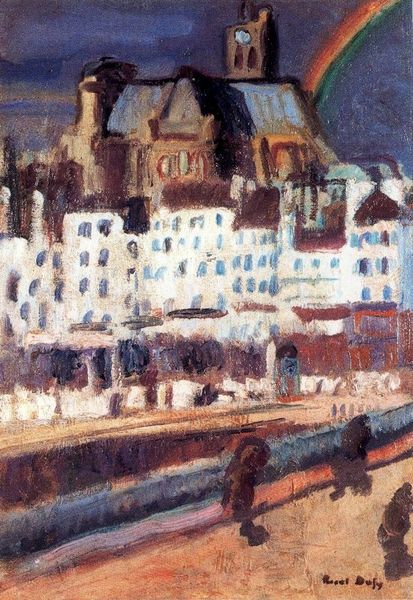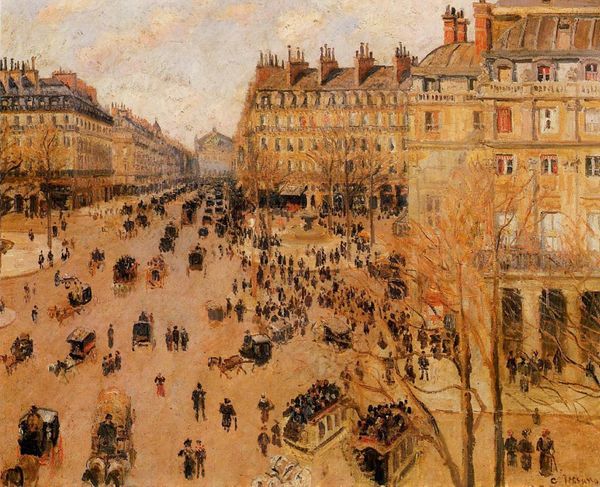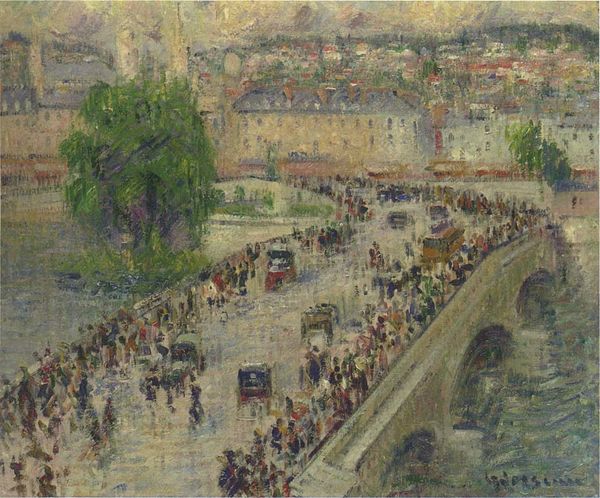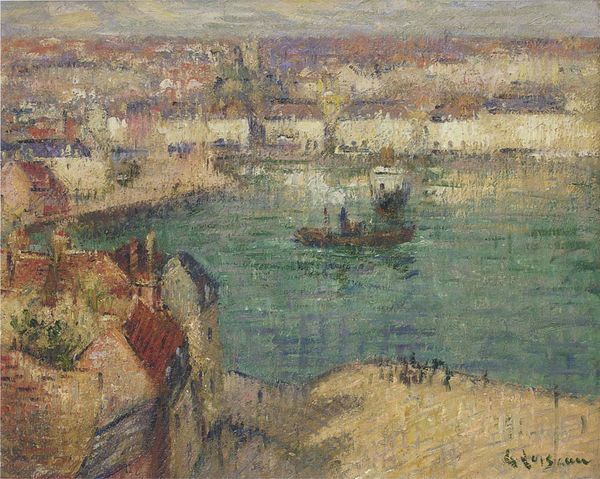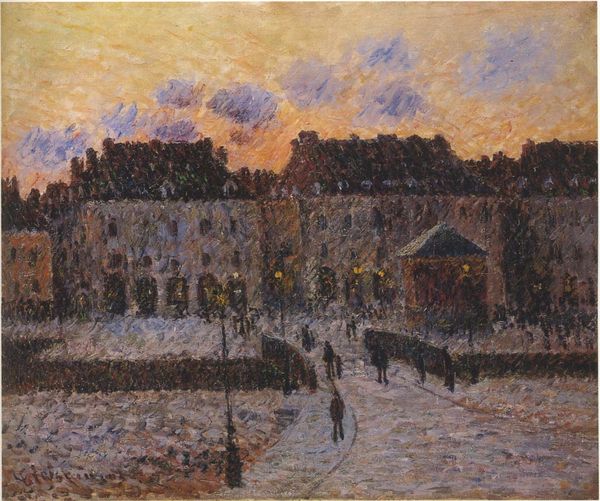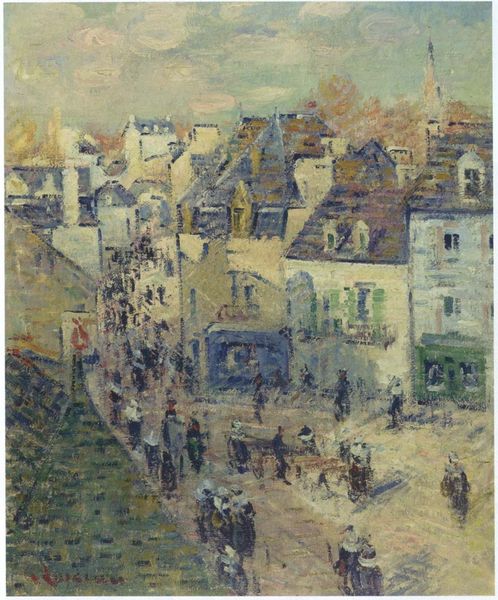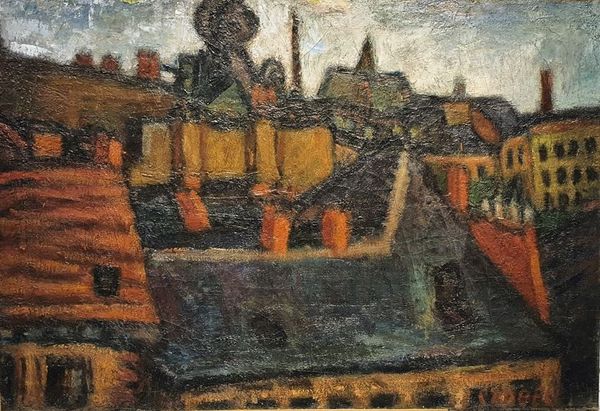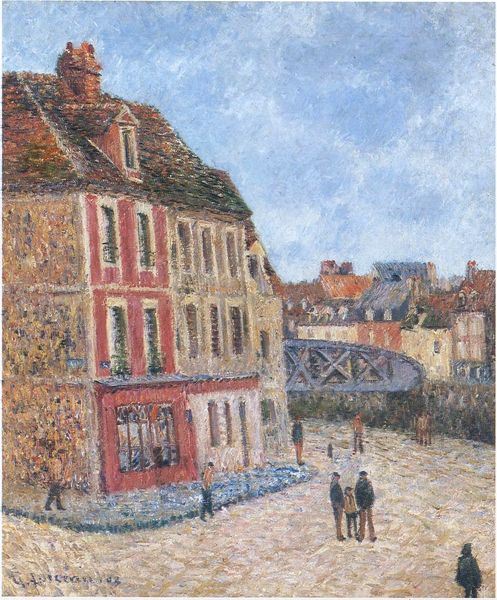
Copyright: Public domain US
Editor: This is Raoul Dufy's "The Louis-Philippe Bridge and the Saint Gervais Church" from 1904, rendered in oil paint. I find it incredibly evocative; the hazy atmosphere almost feels like a memory. What do you see in this piece beyond a typical cityscape? Curator: Well, it’s not just a picture postcard of Paris, is it? For me, this work raises interesting questions about representation and the rapidly changing urban landscape at the turn of the century. Consider the bridge itself: it embodies connection, transition, yet it’s also a site of potential social division. The church looms in the background, a traditional symbol juxtaposed against a modernizing city. How does this interplay reflect the tensions of the time? Editor: I hadn't considered it in that light. The church does feel somewhat...overwhelmed, perhaps, by the sprawl of the city around it. Do you think Dufy was intentionally commenting on the decline of religious influence? Curator: Possibly, though it's rarely ever just one thing. Instead, think about the artistic movements percolating at the time—Impressionism, Fauvism—and how they broke away from traditional academic styles to capture fleeting moments and subjective experiences. Dufy isn't just painting a scene; he’s conveying a specific, embodied perception of Paris. Editor: So, it's less about architectural accuracy and more about conveying a mood or feeling tied to that specific time and place. Curator: Exactly! It’s about acknowledging that perspective is never neutral; it’s always filtered through individual experience and the larger socio-political context. Do you notice the brushstrokes? Are they political? Perhaps not directly. But a study of artistic approach and the cultural milieu, can open a more intersectional reading. Editor: I see, this has shifted my perspective from a passive observation to an active interpretation. Thanks for unpacking it for me. Curator: It’s my pleasure. Remembering the layers of social context helps us understand how even seemingly simple landscapes can be incredibly rich cultural documents.
Comments
No comments
Be the first to comment and join the conversation on the ultimate creative platform.
